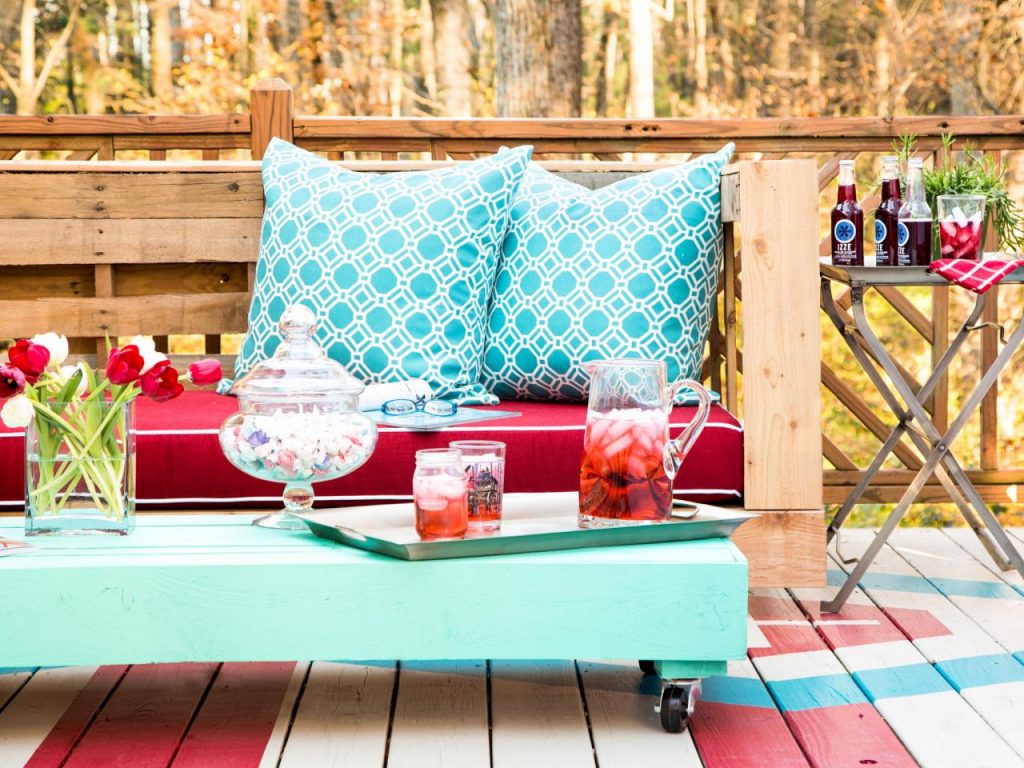Exotische Sago Palme - Pflege, Toxizität und Häufigste Probleme
Topfpflanzen gehören zu den interessantesten und universellsten Dekorationen, die man als Teil der Innenraumgestaltung verwenden kann. Ungewöhnlich aussehende Pflanzen, die durch ihr außergewöhnliches Aussehen verblüffen, werden zu einem beliebten Element. Wenn Sie sich dafür entscheiden, eine Pflanze in Ihre Einrichtung aufzunehmen, sollten Sie ihre Bedürfnisse und möglichen Probleme kennen. Mögen Sie Sagopalmen? Erfahren Sie, welche Eigenschaften sie haben und wie man sie pflegt. Auf diese Weise können Sie die besten Bedingungen für sie in Ihrem Haus schaffen.
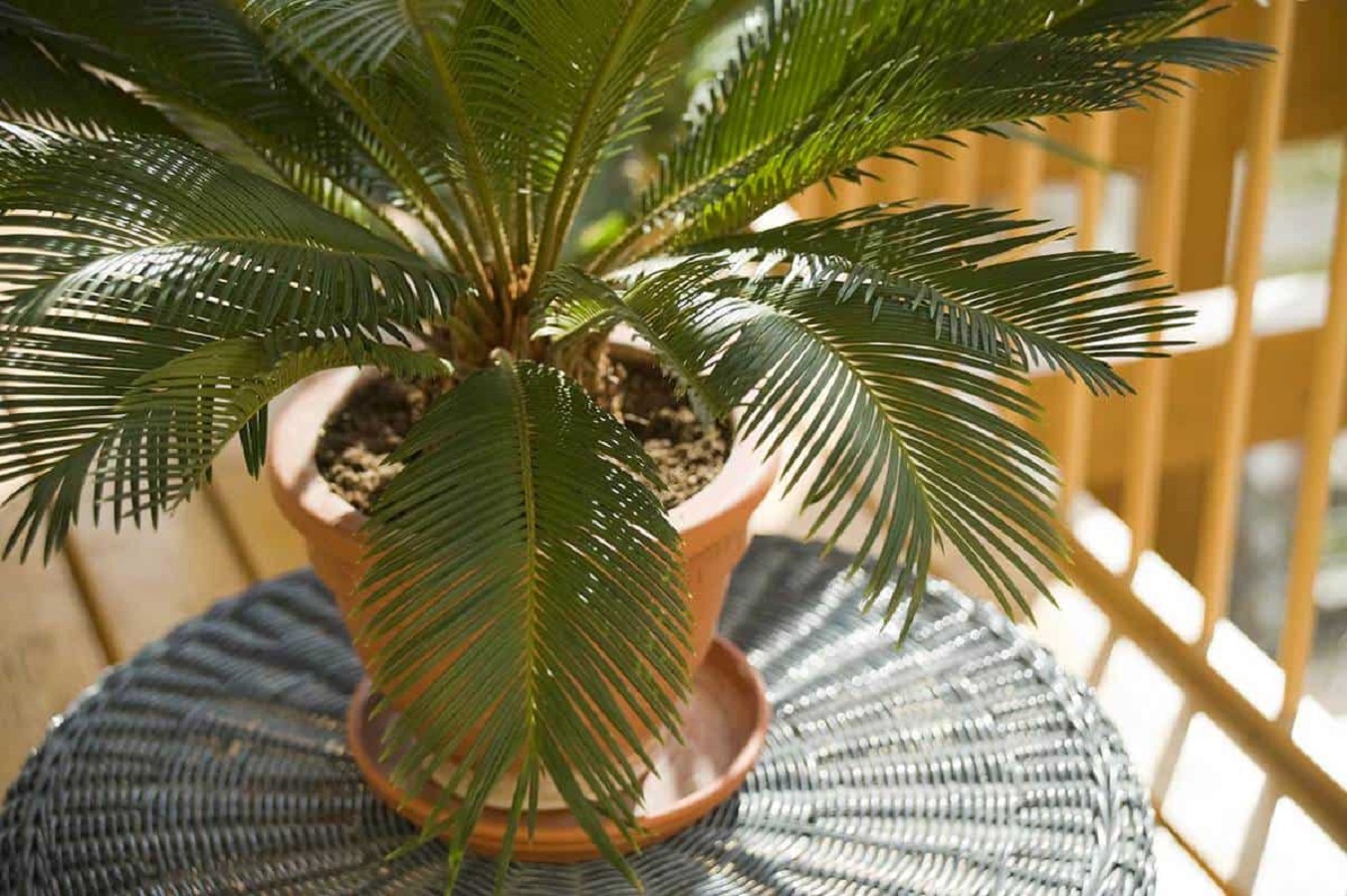
Was ist eine Sagopalme?
Sagopalmen, oder Cycas revoluta werden oft als Topfpalmen bezeichnet. Es stimmt, dass die Pflanze z. B. einer Dattelpalme ähnelt. Aber trotz ihres Namens und ihres Aussehens hat eine Sagopalme wenig mit Palmen zu tun. Sie ist eine Cycade, die aus China und Japan stammt. Deshalb wird sie manchmal auch Japanische Sagopalme genannt.
Sagopalmen wachsen in ihrem natürlichen Lebensraum im Freien und können beachtliche Höhen erreichen. Sie kann aber auch als Topfpflanze kultiviert werden - vor allem in kalten Zonen.
Wenn Sie sich entscheiden, eine Sagopalme zu Hause zu halten, sollten Sie besonders vorsichtig sein. Sagopalmen sind für ihre Giftigkeit bekannt - der von ihnen produzierte Saft ist sowohl für Menschen als auch für Haustiere, einschließlich Hunde und Katzen, schädlich.
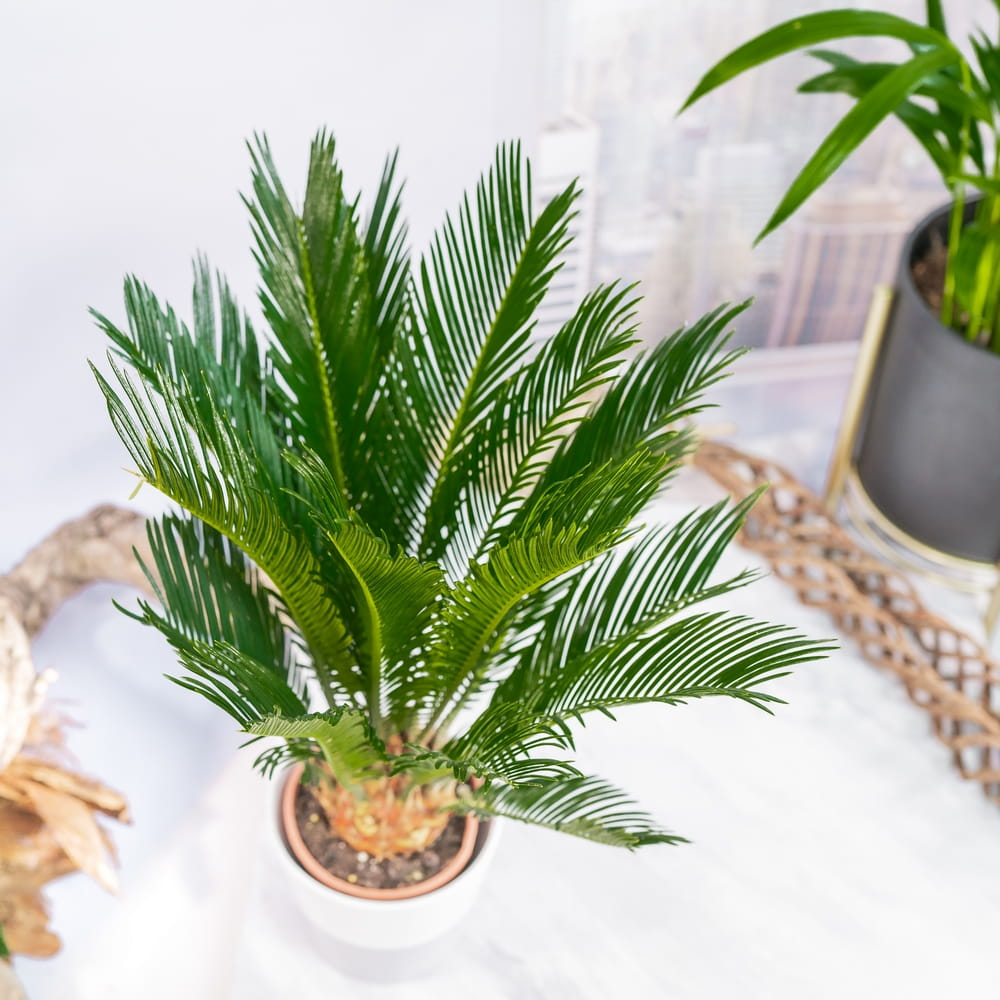
Sago-Palme - was sind die beliebtesten Arten dieser Pflanze?
Cycas revoluta ist die Basissorte der Pflanze, und sie ist die beliebteste Art auf der ganzen Welt. Diese Zimmerpflanze wird wahrscheinlich auch bei Ihnen zu Hause vorkommen. Es gibt aber auch noch andere Arten, die sich durch ihre Ausbreitungsgeschwindigkeit und Herkunft unterscheiden. Es sind die folgenden:
- Cycas circinalis
- Cycas rumphii
- Metroxylon sagu
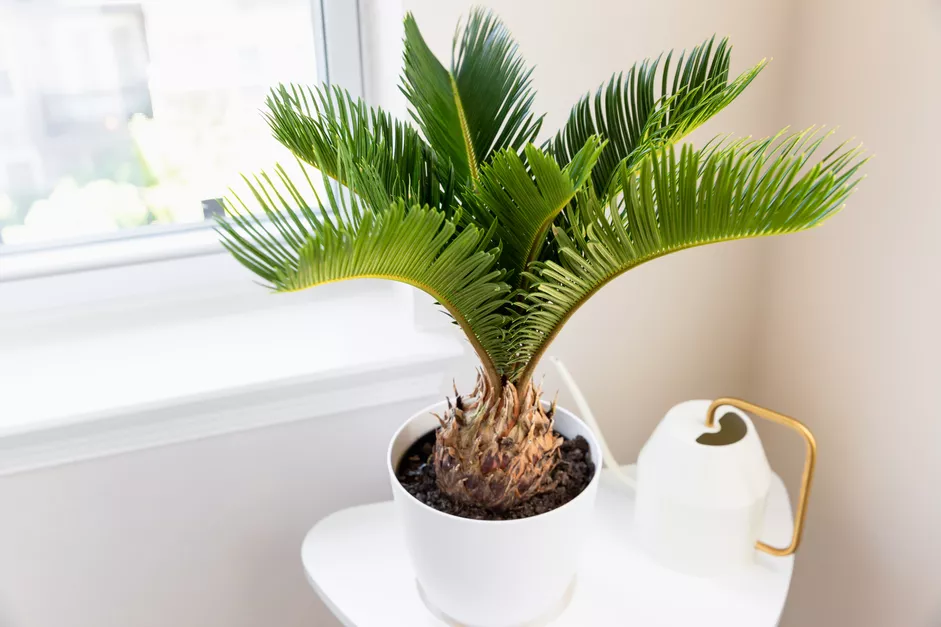
Was sind die besten Bedingungen für eine Sagopalme?
Die Sagopalme ist eine empfindliche Pflanze. Aus diesem Grund braucht sie bestimmte Bedingungen, die nicht nur das Sonnenlicht, sondern auch die Erde, in der sie wächst, sowie die Temperatur und die Bewässerung betreffen. Wenn Sie die Zimmerpflanze ein paar oder vielleicht sogar ein Dutzend Jahre lang in guter Form halten wollen, müssen Sie ihr die besten Bedingungen bieten.
Mögen Sagopalmen direktes Sonnenlicht?
Sagopalmen wachsen gerne in der Sonne. Allerdings sollte die Sonneneinstrahlung nicht zu stark sein - indirektes Sonnenlicht ist die beste Lösung. Aus diesem Grund sollte eine Sagopalme nicht auf einer Fensterbank platziert werden. Der Boden neben der Balkontür oder einem großen Fenster ist eine viel bessere Wahl. Zu starkes Sonnenlicht kann die Blätter verbrennen und sie abfallen lassen.
Wenn Sie in einer kalten Zone leben, können Sie die Pflanze im Sommer auf den Balkon oder die Terrasse stellen. Ein östlicher oder südlicher Standort ist die beste Wahl. Aber denken Sie an eine Regel: Eine Sagopalme darf nicht in der prallen Sonne stehen.
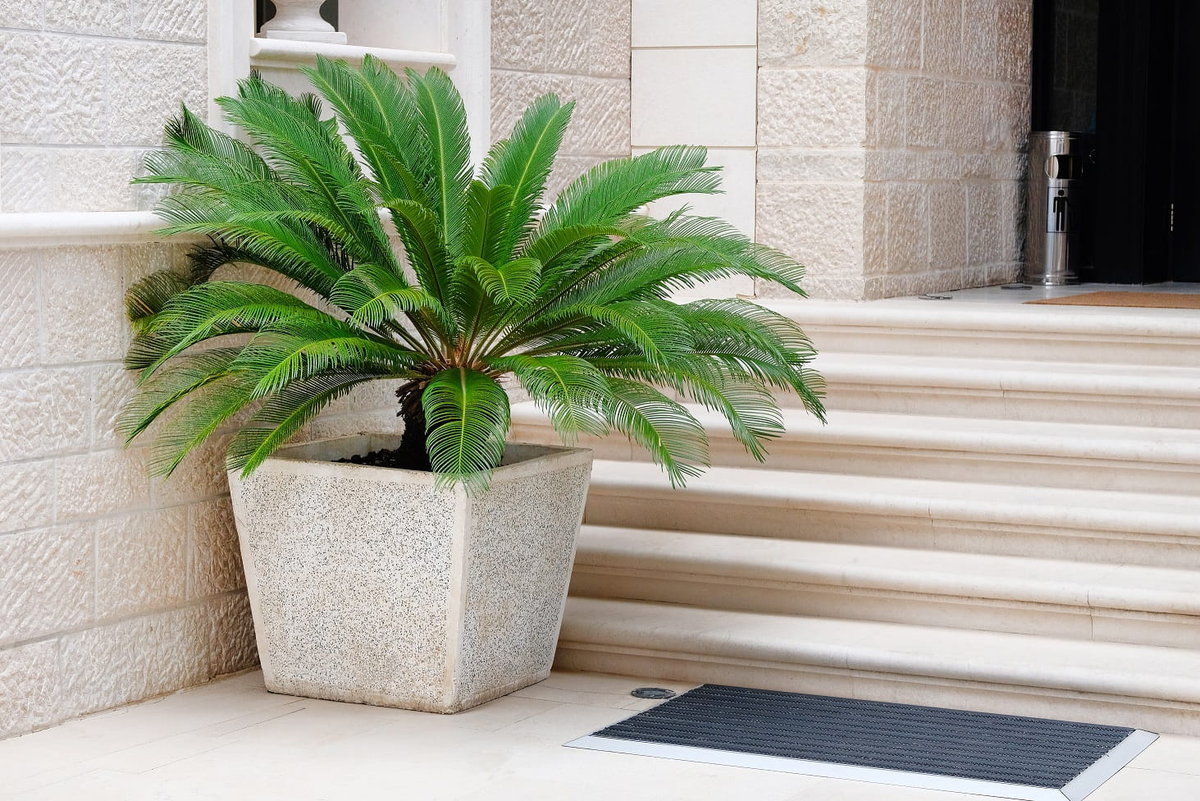
Sago-Palmen - der beste Boden
Sago-Palmen stellen keine besonderen Anforderungen an den Boden, in dem sie wachsen - aber er muss durchlässig genug sein. Eine sandige Bodenmischung ist in diesem Fall die perfekte Wahl. Sie können Ihre eigene Mischung zusammenstellen, indem Sie verschiedene Arten von Blumenerde kombinieren, um die besten Parameter zu erreichen. Wenn Sie noch keine Erfahrung damit haben, kaufen Sie besser eine Mischung im Geschäft. Gartenfachgeschäfte bieten Erden für Palmen und Kakteen an. Beide sind eine gute Wahl.
Was ist die beste Temperatur für eine Sagopalme?
Mäßige Raumtemperatur zwischen 21 und 22°C ist die beste Wahl für eine Sagopalme. Unter diesen Bedingungen kann man das beste Wachstum der Pflanze erwarten. Sie ist eine wärmeliebende Pflanze. Aus diesem Grund sollte die Innentemperatur nicht unter 15-16°C fallen.
Sago-Palme - wie gießen
Sagopalmen mögen nicht zu viel Feuchtigkeit, deshalb sind Sie vorsichtig beim Gießen der Pflanze. Gießen Sie Ihre Sagopalme erst, wenn die Erde im Topf ausgetrocknet ist.
Interessanterweise ist die Sagopalme außerordentlich widerstandsfähig gegen Trockenheit. Sie ist die perfekte Pflanze für alle, die oft vergessen, ihre Zimmerpflanzen zu gießen. Das ist kein Problem, wenn Sie für ein oder zwei Wochen verreisen wollen. Wenn die Sagopalme die einzige Pflanze ist, die Sie haben, müssen Sie niemanden bitten, sie zu gießen.
Muss eine Sagopalme gefüttert werden?
Von Zeit zu Zeit ist es gut, Ihre Sagopalme mit Dünger zu versorgen. Tun Sie das aber nicht öfter als einmal im Monat, und zwar dann, wenn die Pflanze vegetiert.
Experten zufolge sind Flüssigdünger die beste Möglichkeit, eine Sagopalme zu düngen. Diese Produkte sollten die folgenden Elemente enthalten:
- Stickstoff,
- Phosphor,
- Kalium.
Wie schneidet man eine Sagopalme?
Sie müssen Ihre Sagopalme nicht beschneiden - es sei denn, die Blätter fangen an, braun zu werden. Es ist ein häufiger Fehler, vergilbte Blätter abzuschneiden. Ihr Erscheinen bedeutet, dass die Pflanze einige Elemente benötigt. In diesem Fall ist ein Regenerationsprozess zu empfehlen. Das Beschneiden der Blätter würde die Pflanze nur noch schwächer machen. Deshalb sollte man abwarten, bis die Blätter vollständig braun geworden sind.

Getopfte Sagopalme - die häufigsten Probleme
Die größte Gefahr für eine Sagopalme ist die Überwässerung. In Verbindung mit einer falschen Erde oder einem unpassenden Topf kann dies zu Wurzelfäule führen. In diesem Fall ist es unwahrscheinlich, dass sich die Pflanze erholt. Die einzige Lösung ist, eine neue Pflanze zu kaufen und beim Gießen vorsichtig zu sein.
Vergilbende Blätter sind ein weiteres Problem, unter dem eine Sagopalme leiden kann. Es ist ein Zeichen dafür, dass der Pflanze einige wichtige Nährstoffe fehlen. In diesem Fall genügt es, den Boden mit Mangansulfat zu versorgen, und das Problem sollte gelöst sein.
Manchmal werden Sie feststellen, dass die Blätter Ihrer Sagopalme welk aussehen. Dafür gibt es mehrere mögliche Gründe. Erstens könnte sich zu viel Wasser im Topf befinden - stellen Sie sicher, dass Sie dies zuerst beseitigen. Das Problem könnte aber auch viel ernster sein. Wenn die Pflanze nicht übermäßig gewässert wurde, ist sie wahrscheinlich von einer Pilzinfektion befallen. Kaufen Sie in diesem Fall ein Antimykotikum - es sollte das Problem lösen.
Sago-Palme im Haus - die häufigsten Schädlinge
Spinnmilben sind die größte Bedrohung für eine Sagopalme im Zimmer - und auch für andere Zimmerpflanzen. Woran erkennen Sie, dass sie Ihre Pflanze befallen haben? Sie werden kleine gelbe Punkte im Topf bemerken. Manchmal sind sie auch rot oder braun. Spinnweben auf den Blättern sind ein typisches Anzeichen für Spinnmilben.
Wie kann man diese Schädlinge bekämpfen? Sie können ein Hausmittel verwenden - besprühen Sie die Blätter mit einer Mischung aus Seife, Öl und Wasser. Wenn es Ihnen an Erfahrung mangelt, ist ein im Handel erhältliches Mittel gegen Schädlinge eine viel bessere Lösung.
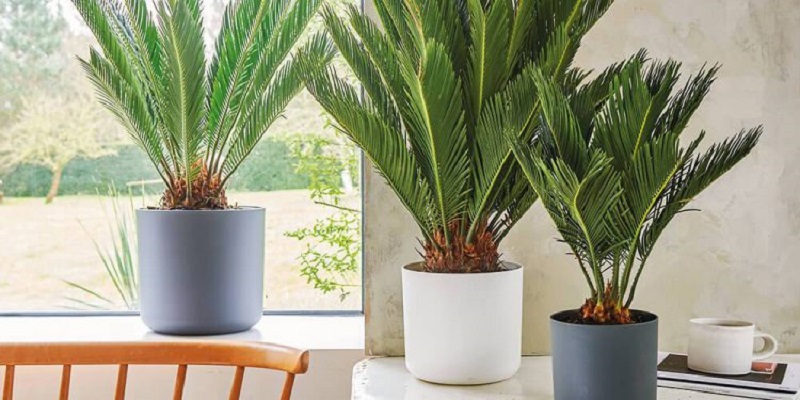
📍 Sago-Palmen - was sind sie?
Die Sagopalme gehört zur Familie der Zykaden und stammt ursprünglich aus China und Japan. Diese Pflanze ähnelt einigen Arten von echten Palmen. In ihrem natürlichen Lebensraum kann sie so hoch wie ein Baum werden. Sie kann auch als Zimmerpflanze gezüchtet werden.
📍 Wie pflegt man eine Sagopalme?
Sago-Palmen sind empfindliche Zimmerpflanzen. Achten Sie daher darauf, dass Sie den richtigen Standort und die richtige Erde für die Pflanze wählen. Die Pflanze mag keine häufigen Wassergaben. Sie können die Sagopalme von Zeit zu Zeit füttern. Schneiden Sie bei Bedarf braune Blätter ab.
📍 Wie bewässert man eine Sagopalme?
Eine Sagopalme muss nicht häufig gegossen werden. Das heißt, Sie können die Blätter alle paar Tage mit Wasser besprühen. Gießen Sie erst Wasser in den Topf, wenn die Erde getrocknet ist.
📍 Warum hat meine Sagopalme gelbe Blätter?
Eine Sagopalme kann aus verschiedenen Gründen gelbe Blätter bekommen. Zu viel Wasser ist einer von ihnen. Aber gelbe Blätter sind ein typisches Zeichen dafür, dass die Pflanze Nährstoffe braucht. Düngen Sie die Pflanze einfach und sie sollte sich erholen.
Empfohlene Artikel




